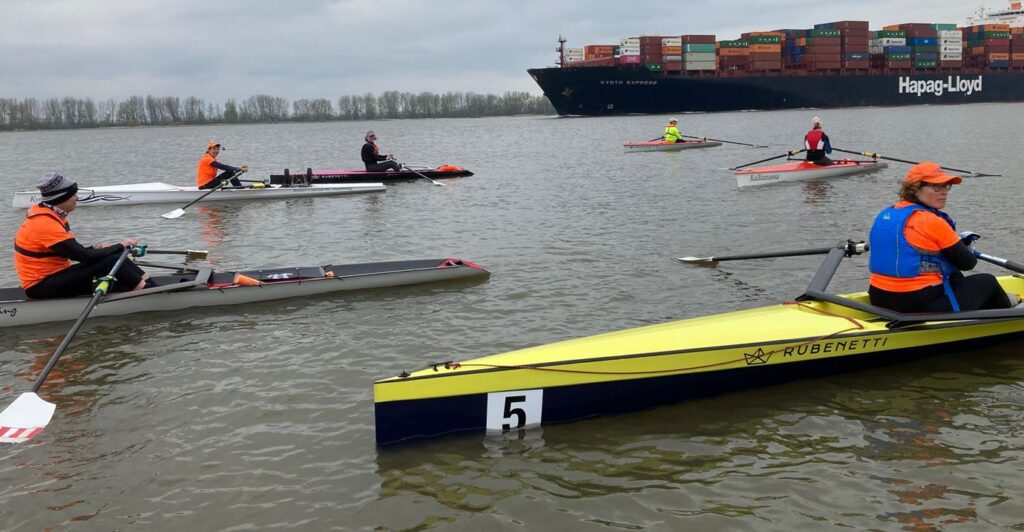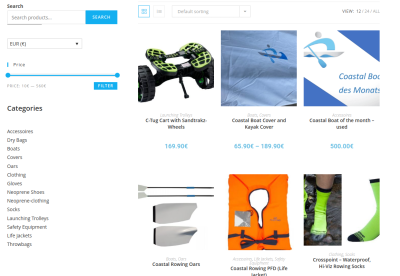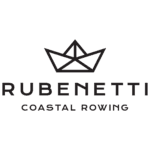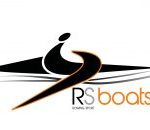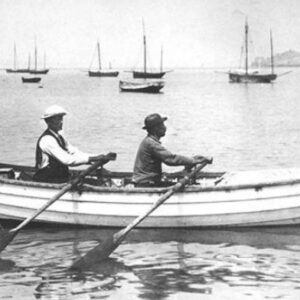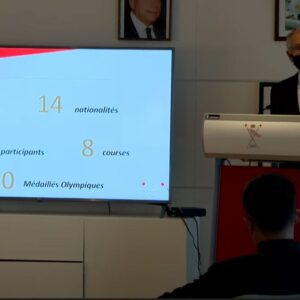Workshop structure Coastal Rowing. Here we read the schedule of our workshops. Dorothea, chairwoman of the first Coastal Rowing Club Hamburg explains.
At the beginning of this year’s rowing season, Volker and Dorothea called for a Coastal Rowing Workshop at the First Coastal Rowing Club in Hamburg. Participants from all over Germany registered for the two-day workshop, all of them experienced rowers on flat water.
Saturday started in the lecture room with a view of the Elbe with a comprehensive introduction to coastal rowing. Here there was an introduction to the Coastal boats, the appropriate rowing clothes and the life jackets that we wear on every outing while rowing.
Introduction to the topic: Navigation rules: This was followed by an introduction to the navigation rules on the Elbe shipping route, the influence of the tide, current and wind conditions, followed by instructions for correct rowing in the waves. Getting back into the boat was also discussed and explained. Volker always illustrated his presentation with the right tools.
Safety on the water: In the afternoon, the participants were able to implement what they had learned under practical guidance in Coastal one and Coastal two. For the safety of the participants, a skipper from the Mühlenberger Sailing Club was on hand in the accompanying motor boat. We would like to take this opportunity to thank the MSC again for the uncomplicated motorboat support.

Practice, practice: The key element of the Workshop structure Coastal Rowing. Practice. Launching and landing boats is very different compared to flat water boats. Wind, tides and currents must always be taken into account. A challenge for some. It quickly became apparent that orientation on such a wide and wavy body of water with tidal currents is not that easy, so that the skipper had to keep the rowers away from the fairway where the large container ships are sailing. At the end of the tour, Dorothea Hory then demonstrated how to get back into the boat – capsize drills – a skill that every coastal rower should master.
The same thing continued on Sunday. Race techniques: First, Volker gave a good theoretical introduction to coastal regattas with long-distance races and beach sprints.
Coastal rowing techniques: He explained the particularities selected documentes and supporting videos. the sporting requirements in wind, waves and tides and the rowing techniques on the buoys were explained
Waves / Surf techniques: Later followed trips with small waves in a different boat crew.
Even more practice: The rowers spent the majority of their Sunday on the water. Buoy techniques, surf techniques, boat entry and boat eit strategies were performed
Grand finale: After a final meeting with home-baked cake and coffee, the workshop ended in the early afternoon. The participants unanimously reported that coastal rowing is very different from flat water rowing and that the rowers had clearly underestimated the knowledge required for this in advance. The joy of the participants in this sport was great.
In the First Coastal Rowing Club we have introduced a training course for umpires. This includes a theory course with an exam and a practical part. It is only with this training that you can go independently on the Elbe, which is a demanding and very beautiful coastal area below the port of Hamburg.
Dorothea Hory is 1st Chairperson of the First Coastal Rowing Club Hamburg

